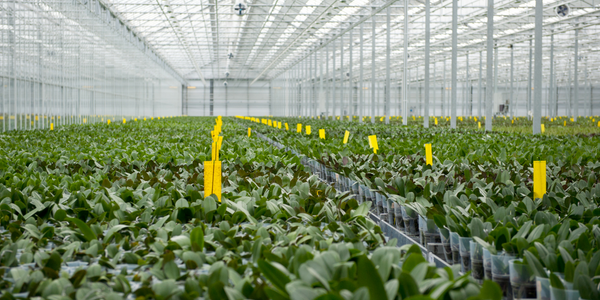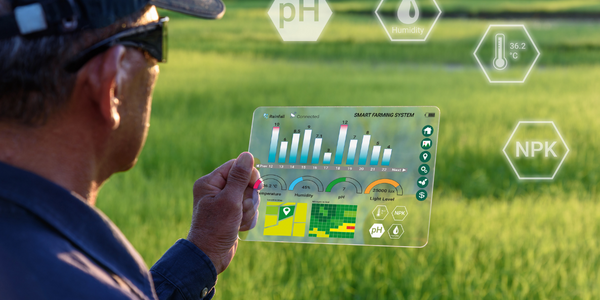下载PDF
Automating fertiliser supply in Western Australia with Telstra and Cumulocity IoT
技术
- 平台即服务 (PaaS) - 连接平台
适用行业
- 农业
适用功能
- 物流运输
用例
- 供应链可见性(SCV)
- 储罐液位监测
服务
- 系统集成
挑战
CSBP, an Australian fertiliser and chemical company, was facing challenges in managing inventories and supplies of fertiliser during the peak season. As the main supplier of the preferred liquid fertiliser used in farming grains in Western Australia, urea ammonium nitrate (UAN), it needed to be able to meet the needs of the farmers speedily. The farms are spread over tens of millions of hectares in Western Australia, presenting a logistical problem for fertiliser suppliers. The farmers tend to stock up on fertiliser in April/May and when the rains fall they rapidly deplete their tanks. Some larger farms have several tanks to manage. Traditionally, they had to monitor the floating gauges in each tank, waiting until they were empty to re-order, because the fertiliser can only be trucked in whole tanker loads. Third party trucking companies are scheduled by CSBP to collect the fertiliser from the Kwinana, WA, depot. Sometimes these trucks have to deliver to farms that are hundreds of kilometers away from the Kwinana depot. This all adds to the supply chain complexity, especially as so many farmers run out of fertiliser at the same time.
关于客户
CSBP is an Australian fertiliser and chemical company located in Kwinana, Western Australia - 40 kilometers south of Perth. It is a subsidiary of Wesfarmers Chemicals, Energy & Fertilisers, part of Wesfarmers Limited’s Industrials division. With 600 employees, its products are essential to a variety of Australian industries including agriculture, iron ore and coal mining, nickel and gold extraction and construction. CSBP is the main supplier of the preferred liquid fertiliser used in farming grains in Western Australia, urea ammonium nitrate (UAN).
解决方案
To remotely measure the farmers’ liquid fertiliser product (Flexi-N) CSBP was interested in finding a cost-effective way to implement technology using the Narrowband IoT network (NB-IoT) from Telstra. Australian communications powerhouse Telstra partners with Cumulocity IoT for its smart IoT environment monitoring solution, which enables customers to collect, analyze and act on data from sensors. Cumulocity IoT, together with Telstra, developed a solution to collect data on the levels of fertiliser in the tanks, measuring the levels every 15 minutes and reporting them into CSBP’s systems every four hours. When the level drops to a certain point, it triggers an alert and fertiliser may be ordered automatically. More than 150 of Telstra’s Captis Environment Monitoring IoT sensors were deployed onto tanks around Western Australia, with 26 growers taking part in the pilot during the 2019 growing season.
运营影响
数量效益
相关案例.

Case Study
Intelligent Farming with ThingWorx Analytics
Z Farms was facing three challenges: costly irrigation systems with water as a limited resource, narrow optimal ranges of soil moisture for growth with difficult maintenance and farm operators could not simply turn on irrigation systems like a faucet.

Case Study
Greenhouse Intelligent Monitoring and Control Solution
Farming Orchids is the most successful form of precision farming in Taiwan, and also the most exported flower. Orchids need a specific temperature and humidity conditions to grow and bloom, and its flowering time may not be in line with market demands, so the price collapses when there is overproduction. Therefore, some farmers began to import automated greenhouse control systems for breeding and forcing, which not only improves quality, but also effectively controls the production period and yield to ensure revenue. In 2012, an orchid farmer built a Forcing Greenhouse of about 200 pings (approximately 661 Square Meters) in Tainan, Taiwan. The system integrator adopted Advantech’s APAX-5000 series programmable automation controllers to build the control platform, coupled with Advantech WebAccess HMI/SCADA software, to achieve cloud monitoring. The staff of the orchid field can monitor important data anytime via smart phone, iPad, and other handheld devices, and control the growth and flowering conditions. System requirements: In the past, most environmental control systems of orchid greenhouses in Taiwan used PLCs (Programmable Logic Controller) with poorscalability and control, and could not be connected to the Internet formonitoring from the cloud. For advanced database analysis and networking capability, the PC platform must be adopted. Therefore, PAC Systems (Programmable Automation Controller) with both PLC programming capabilities andPC functions is a better choice.The environmental control of the Orchid greenhouse switches on and off devices like fan, shade net, cooling/heat pump, liquid flow control, water-cooling wall etc. It is controlled by a control panel of electric controllers, and is driven by a motor, to adjust the greenhouse temperature, humidity, and other environmental conditions to the set parameters.

Case Study
Enabling Internet of Things Innovation in Agriculture
DigiBale, wanted to apply technology know-how and IP from implementations successfully to more agriculture sectors including cotton, forestry, sugarcane and cattle. However, farmers and growers still have worries about the connected technology.

Case Study
Precision beekeeping with wireless temperature monitoring
Honeybees are insects of large economic value and provide a vital service to agriculture by pollinating a variety of crops. In addition, bees provide us with valuable products such as honey, beeswax, propolis, bee venom, etc. Monitoring of honeybee colony health, population, productivity, and environmental conditions affecting the colony health have always been exceedingly difficult tasks in apiculture. Research has shown that even small deviations (by more than 2°C) from the optimal temperatures have a significant influence on the development of the brood and the health of adult bees.







